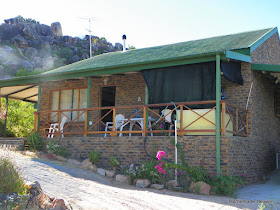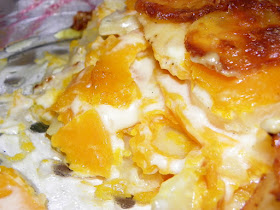So I am back in the land of the working class, no more holidays and relaxation. Now it's work, getting ready for back to school and most importantly, planning 2010 in the blogosphere.
This year is going to be as big as 1994! South Africa is hosting the
FIFA World Cup 2010!
The first World cup was held in 1930, with 13 teams and was hosted by Uruguay. This year there will be 32 teams, with 8 group stages followed by a knockout of 16 teams - leaving a final winner!
The last World Cup was held in 2006, hosted by by Germany and was won by Italy in a 5-3 penalty shoot out against France. The highlight of the match, other than the Italians winning was when French captain Zinedine Zidane head-butted the chest of the Italian central defender.
Brazil has the record for the most world cup appearances (19), the only country to appear in every world cup. They have also lifted the winners trophy the most times (5). Germany have the record for being in the final 4 (semi-finals/finals), eleven in total. The strangest statistic that goes with Germany's record is that they have the most goals conceded against them - 112!
Now, this whole history wouldn't be worth anything if I didn't mention Diego Maradona, who has the record for most appearances as captain for Argentina. He played and captained in 4 championships, from 1982 - 1994. He also holds the record for the longest suspension from the game, 15 months for doping.
Well now that I have given you just about all the information you need to sound like a soccer expert, I will move on to the the fans.
The highest match attendance at a World Cup final was in 1950, where 199,854 people crammed into the Maracana Stadium in Rio de Janerio, to watch Brazil play Uruguay. The lowest game attendance was at a game in Uruguary 1930, between Romania and Peru, where only 300 people came to watch.
The number of people watching the game on TV is even more staggering. The 2006 World Cup is recorded as the most watched sporting event of that year, with an average of 95 million viewers per match! Which is not as many as those who watched Princess Diana's funeral, 2.5 billion viewers or 1 billion people who watched Michael Jackson's funeral or the 2 billion people who watched Pope John Paul's funeral. This just shows - funerals are good television!
So you can see, this is a major sporting event and this year will be the first time it is being held in Africa - and in the most beautiful country in Africa, South Africa!
To celebrate this wonderful year of Africa, and South Africa especially, I plan to introduce and re-visit many of the wonderful flavours, cultures and histories of the people of South Africa and Africa as a continent.
I hope you will enjoy the experience, for those who can't get to come to South Africa for the celebrations, this will be the place you can come to enjoy Africa as never before.
So let's kick off with India! You might now wonder why India? India has given South Africa some of it's most colourful and beautiful people. A history of struggle and slavery but ultimately success, a culture that has integrated into the melting pot of the Rainbow Nation (as South African are called).
I have sourced this information from
Proudly Indian.
The first Indians arrived in South Africa between 1860 - 1911 as indentured labourers. They were mostly Hindus from Madras. Mostly they worked on the sugar plantations, but also wherever cheap unskilled labour was needed.
The earliest famous Indian visitor was Mahatma Gandhi who arrived in South Africa in 1895, to appear in a court case on behalf of an Indian client. He then made his home here. He stayed in South Africa for 21 years. He started the passive resistance movement in South Africa.
Gandhi said that the single most creative time of his life (and the time that changed the course of his life) was when he was in South Africa, where he began to teach a policy of passive resistance to the South African authorities. Gandhi only returned to India in 1915, after the government of South Africa made concessions to his demand for recognition of Indian marriages and the abolition of the poll tax. Before this time, the South African govenrment (then still a colony of Britain) did not recognize the existence of Indians in South Africa!
So, the Indians came and added to this country, much more than just curry and a love of bright colours. We have the South African law relating to the 'Admissibility of Confessions', adapted from section 25 of the Indian Evidence Act of 1872. We have Algoa Bay (also known as Port Elizabeth), which means "towards Goa". And perhaps one of the defining characteristics of South African Indians today is their talent in business.
Some notable South African Indians include:
Frene Ginwala the first Speaker of the democratic post-apartheid National Assembly of the Parliament of the Republic of South Africa.
Hashim Amla the first player of Indian descent to play Test Cricket for South Africa.
Haroon Lorgat Chief Executive of the
International Cricket Counciland of course, who can forget
Schabir Shaik former financial adviser to
Jacob Zuma?
Now we get down to the good part, the food! What would life be without curry? Definitely not Homemade Heaven!
Here is a delightfully easy prawn curry recipe, made by a South Africa - alas not authentic, but easy enough for those who are learning the ropes.

Prawn Curry
1 kg Prawn Meat, cleaned and deveined
2 Large Brown Onions
2 Tins Chopped Peeled Tomatoes
3 Garlic Cloves Chopped
1 teaspoon Garlic
1 teaspoon Ginger
2 Teaspoons
Kashmiri chilli powder3 teaspoons Curry Powder
2 Fresh Green Chillies
3 Bay Leaves
2 teaspoons Sugar
1 teaspoon Cumin
Juice of 1 lemon
2 teaspoons Garam Masala
Salt and Black pepper
Fry the onions until soft and golden.
Add the spices (except the Garam Masala) and fry for one minute.
Add the tomatoes, sugar and a little water.
Bring to the boil and then reduce to a simmer for at least an hour adding water if it becomes too dry.
Once the sauce is cooked and the tomatoes have totally broken down stir in the garam masala and cook for another 15 minutes.
Increase the heat and add the prawns and cook until done.
Do not over cook the prawns, or they'll have the texture of rubber.
Serve with basmati rice and naan bread.

 This weekend I spent the most wonderful time in Citrusdal, at Wolfkop Nature Reserve.
This weekend I spent the most wonderful time in Citrusdal, at Wolfkop Nature Reserve.
 The valley below, just after sunset.
The valley below, just after sunset. Preparing for the hiking - take one hammock, a good book and don't fight the heavy eyelids!
Preparing for the hiking - take one hammock, a good book and don't fight the heavy eyelids!
 A warning to the "tree-hugger" out there, be careful what you hug, it might not hug you back with as much love!
A warning to the "tree-hugger" out there, be careful what you hug, it might not hug you back with as much love! When hiking, you have to climb through the tough bits to get to the good stuff!
When hiking, you have to climb through the tough bits to get to the good stuff!
 If you can, take someone you love with, I am so blessed to have Keith, to share in these wonderful moments and places. Thanks Keith for making my life such a pleasure to live.
If you can, take someone you love with, I am so blessed to have Keith, to share in these wonderful moments and places. Thanks Keith for making my life such a pleasure to live.












